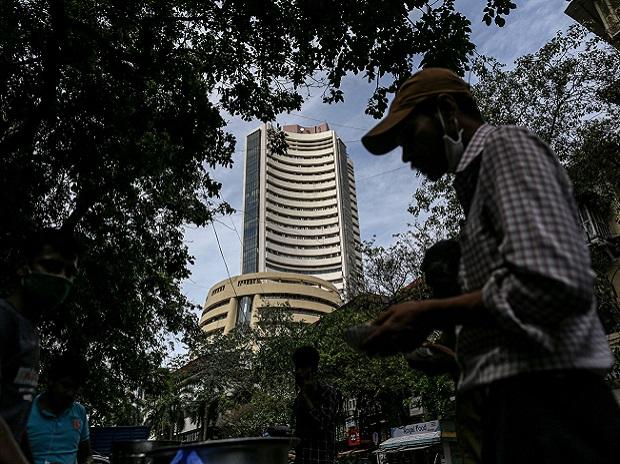The rupee and bond lost after the US Federal Reserve policy indicated imminent rate hikes to tame high inflation, further pressured by international crude oil prices touching $90 a barrel.
US central bank chief Jerome Powell said the Federal Open Market Committee (FOMC) “is of a mind to raise the federal funds rate at the March meeting assuming that the conditions are appropriate for doing so.”
The ‘dot-plot’ forecast of FOMC’s median forecast suggested three rate hikes in 2022, revised up from one earlier. The taper, or bond purchases, will continue even as the pace will decrease.
The US retail inflation, at 7 per cent, is the highest since 1982, and the core inflation at 5.5 per cent is the highest since February 1991, ICICI Securities said in a note, expecting Fed Funds rate to reach 1.25 per cent by the end-2022, from 0.25 per cent now. The US Fed aims to keep inflation at 2 per cent.
The US stock indices ended in red after the guidance, and the Asian markets, including in India, tumbled.
The US dollar index, which measures the greenback’s strength against major currencies, rose to its month-high of 96.50.
At 11.30 am, the 10-year bond yield was trading at 6.72 per cent, up from its previous close of 6.66 per cent. The rupee fell as much as 75.25 a dollar, from its previous close of 74.79, but RBI has stepped in with intervention.
Sensex tumbled over 1,000 points to 56,698.24
The rupee is expected to lose further, even as the central bank is expected to cushion the fall through intervention. The RBI was seen selling dollars in the market through nationalised banks on Thursday morning.
“Dips in the USDINR pair if any should only be more of correction rather than a reversal. While the high oil prices are adding to the pressure on the rupee at the moment, even if things get better geopolitically and oil prices subside, the US dollar will have an upper hand as we move ahead; we may well be in on our way to witnessing 76 plus again,” said Imran Kazi, vice president at currency consultant Mecklai Financials.
The present level of rupee is a good opportunity for exporters to start selling their dollars for the medium term of six months, said Anil Kumar Bhansali, head of treasury at Finrex Treasury Advisors.
After the US policy, the US 2-year short-term rates jumped to a 23-month high of 1.17%, while the 10-years bond yields rose to 1.85 per cent. The 10-year US yields were barely 1 per cent a year back.
The forward rates will come under pressure due to the rise in short-term yields in the US market, noted IFA Global.
“The volatility in USD/INR has returned with a bang,” said Amit Pabari, managing director of CR Forex, adding the rupee could fall to 75.70 levels in the short term.
The US Fed policy may also force the Indian central bank to raise its rates quicker than expected, analysts now expect.
“The Reserve Bank of India (RBI) will conduct monetary policy primarily with domestic inflation in mind. But aggressive monetary tightening by the Fed invariably puts pressure on emerging-economy central banks,” ICICI Securities said.
But India is in a much better position now to weather global volatility. The country was current account surplus in fiscal 2020-21 and is expected to be in a slight deficit of 1 per cent of GDP in FY21-22, and 1.5 per cent of GDP in FY22-23. India’s foreign exchange reserve of $635 billion is also adequate enough to weather any external financial pressure, the brokerage noted.
State Bank of India Group Chief Economist Soumya Kanti Ghosh wrote in his research note that it is time for the Reserve Bank to start with a reverse repo hike on the February 9 monetary policy.
“In any rate hike cycle, the financial markets actually do better as any material risk is factored in the prices,” Ghosh said, adding the interbank call rates and other short-term rates being much higher than reverse repo rate indicates the stage being set “for a reverse repo normalisation.”
 Dear Reader,
Dear Reader,
Business Standard has always strived hard to provide up-to-date information and commentary on developments that are of interest to you and have wider political and economic implications for the country and the world. Your encouragement and constant feedback on how to improve our offering have only made our resolve and commitment to these ideals stronger. Even during these difficult times arising out of Covid-19, we continue to remain committed to keeping you informed and updated with credible news, authoritative views and incisive commentary on topical issues of relevance.
We, however, have a request.
As we battle the economic impact of the pandemic, we need your support even more, so that we can continue to offer you more quality content. Our subscription model has seen an encouraging response from many of you, who have subscribed to our online content. More subscription to our online content can only help us achieve the goals of offering you even better and more relevant content. We believe in free, fair and credible journalism. Your support through more subscriptions can help us practise the journalism to which we are committed.
Support quality journalism and subscribe to Business Standard.
Digital Editor

RECOMMENDED FOR YOU